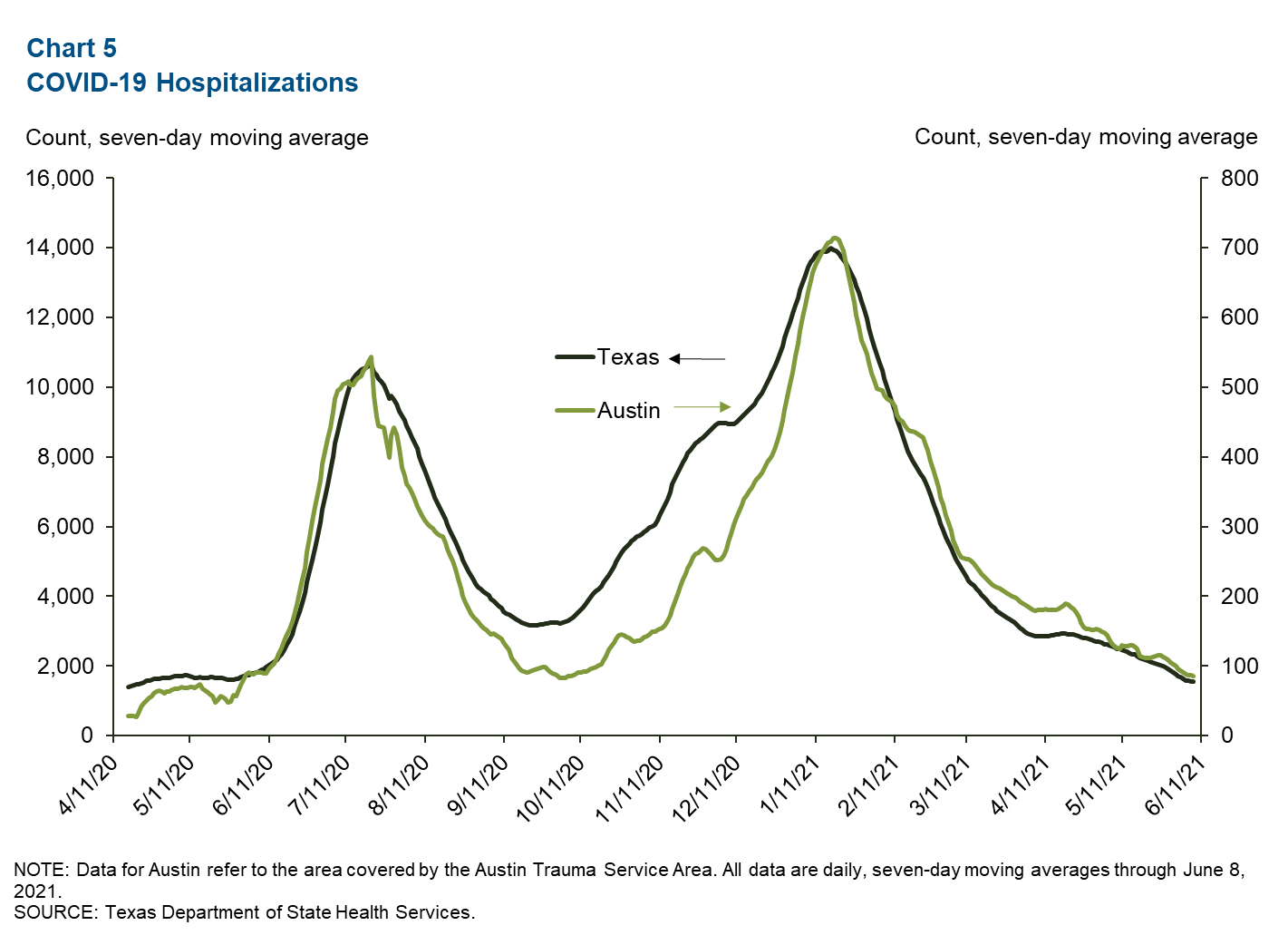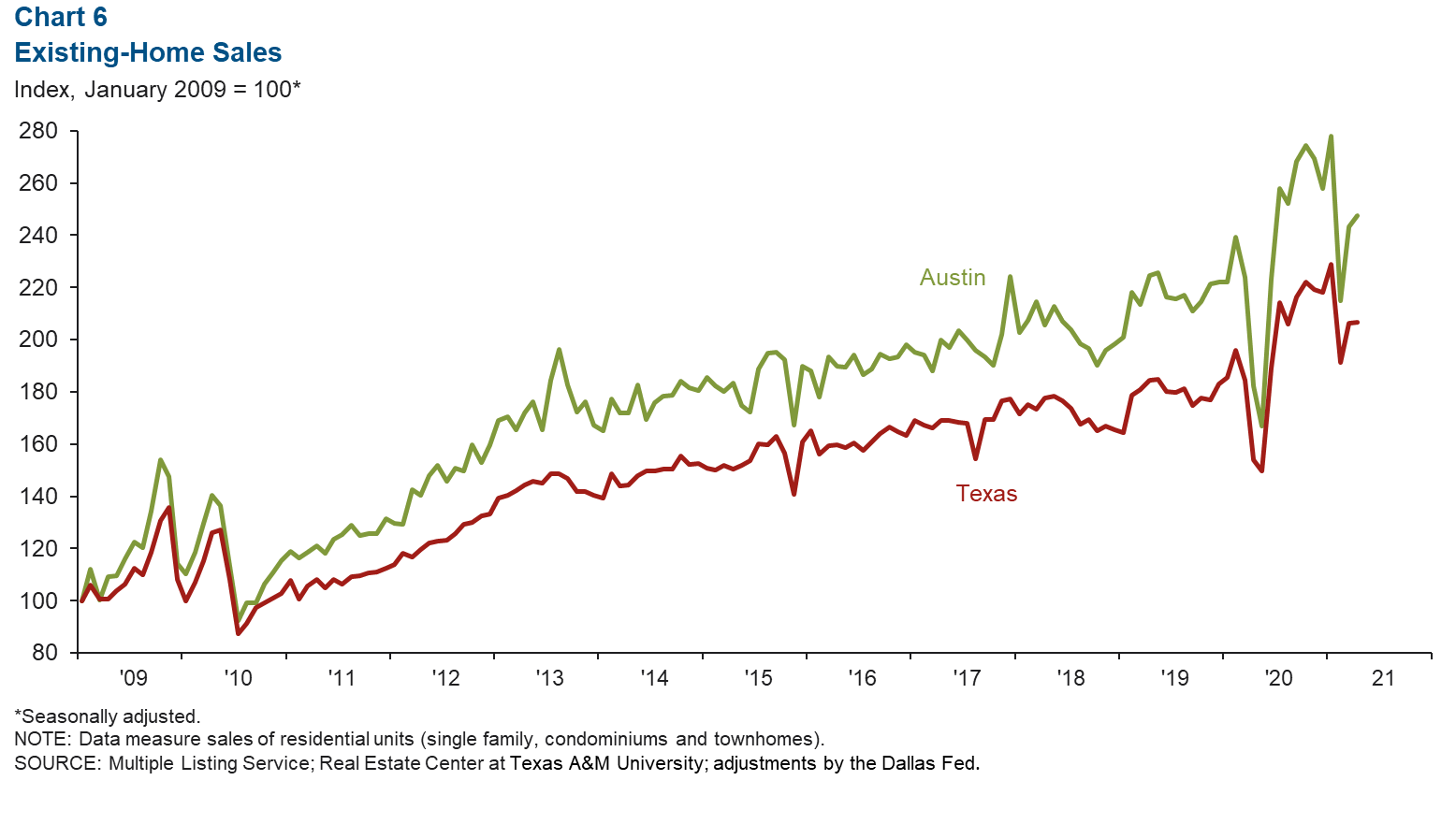Austin Economic Indicators

June 15, 2021
The Austin economy turned in a healthy performance in April. The Austin Business-Cycle Index grew at a robust rate, the unemployment rate declined and recent payroll gains were broad based across sectors. COVID-19 hospitalizations have steadily declined since increasing briefly in late April. Existing-home sales decelerated in April, and regional consumer spending remained strong.
Business-Cycle Index
The Austin Business-Cycle Index—a broad measure of economic activity—expanded an annualized 10.6 percent in April. Recent strength in the economy can be attributed to job gains and unemployment rate declines. April marked the 12th consecutive month of growth, which suggests a strong recovery in the Austin economy (Chart 1).

Labor Market
Unemployment Rate Declines
Austin’s unemployment rate fell in April to 4.8 percent, the lowest level since March 2020 (Chart 2). This is well below the state’s jobless rate of 6.7 percent and the nation’s 6.1 percent rate.

Recent Job Growth Positive in Most Sectors
Austin payrolls expanded an annualized 6.7 percent, or by 18,050 net jobs, in the three months ending in April (Chart 3). Leisure and hospitality led job growth (28.0 percent, or 6,815 jobs), followed by trade, transportation and utilities (12.1 percent, or 5,610 jobs), other services (9.2 percent, or 935 jobs) and information (7.8 percent, or 765 jobs). Financial activities and government were the only sectors that contracted on net – both only slightly. As of April, 89.0 percent of the 133,211 jobs lost at the onset of the pandemic in March and April 2020 had been recovered.

Consumer Spending
Although down slightly in mid-May, consumer spending in Austin has been strong in recent months. In the metro’s most populous county, Travis, credit and debit card spending has surpassed January 2020 levels since last July, except for a dip in late November 2020 and during Winter Storm Uri in mid-February. As of May 16, 2021, spending in the county was up a strong 33.9 percent relative to January 2020, while spending in Texas was up 12.1 percent (Chart 4).

COVID-19 Hospitalizations
The number of people currently hospitalized with COVID-19 in Austin has trended downward since peaking at 714 on Jan. 18 (Chart 5). At the state level, the number of COVID patients hospitalized peaked at 13,977 on Jan. 17. As of June 8, there were 86 people hospitalized in Austin and 1,545 in Texas.

Real Estate
Existing-home sales in Austin increased 1.8 percent in April on the heels of strong activity in March (Chart 6). That compares with a 0.2 percent increase in the state in April. In the first four months of 2021, metro home sales were 13.3 percent higher relative to the same period in 2020. At the state level, sales were up 15.8 percent. The median price of homes sold in April was $449,275 in the metro, a 36.2 percent rise year over year, compared with $289,936 in Texas, a 12.7 percent increase.

NOTE: Data may not match previously published numbers due to revisions.
About Austin Economic Indicators
Questions can be addressed to Judy Teng at judy.teng@dal.frb.org. Austin Economic Indicators is released on the first Thursday of every month.